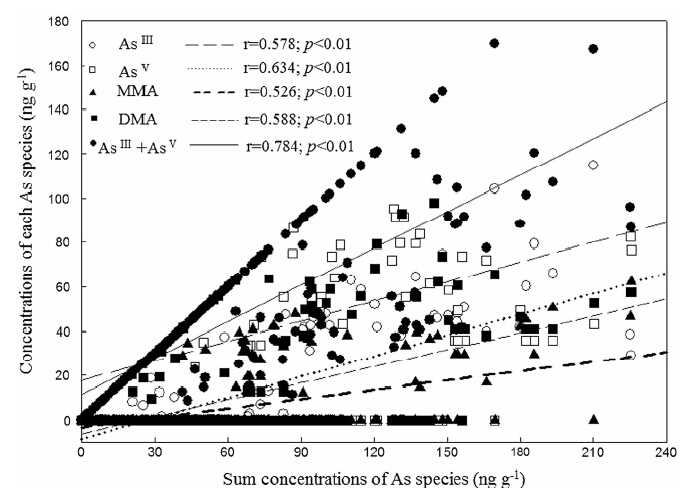Experts Cooperate to Investigate As Speciation and Its Potential Health Risk in Rice
2014-10-15
Arsenic (As) has gained considerable attention globally in recent years due to its carcinogenic and other toxic properties. The metal is widely accumulated in subsoil and groundwater. Rice, which is irrigated by groundwater, is one of the main potential routes of dietary As exposure.
As one of the most economically dynamic provinces in China, Guangdong Province is also one of the most heavy metal-polluted areas. The geometric mean concentration of As in soil of Guangdong Province is higher than the mean values in China.
In order to improve the understanding of health risk posed by As in rice in Guangdong, experts from Wuhan Botanical Garden and Shenzhen Center for Disease Control and Prevention analyzed the concentration of As species (AsIII, AsV, MMA and DMA) in 260 rice samples from 13 cities.
Through High-performance liquid chromatography-atomic fluorescence spectrometry (HPLC-AFS) analysis of As species (AsIII, AsV, MMA and DMA), the levels of sum concentrations of As species in 260 rice samples varied from non-detect to 225.58 ng g-1, with an average value of 57.27 ng g-1. The four detected As species followed the order: AsIII (34.77 ng g-1) >AsV(9.34 ng g-1) > DMA (8.33 ng g-1) > MMA (4.82 ng g-1).
The comparison of sum concentrations of As species in rice from 13 cities showed that significant geographical variation of As contamination in rice existed in Guangdong Province by chi-square test (p ﹤0.05).
Experts studied the correlation relationships between As species and sum of As species for 260 rice samples. A high correlation between inorganic As (AsIII and AsV) and the sum of As species revealed that the rice samples of Guangdong Province were divided as inorganic As type.
Exposure risk assessment denoted that the average human weekly intakes of inorganic As via rice consumption were 1.91 μg kg-1 body weight. Among the 13 detected cities, hazard quotient (HQ) values of total As via rice consumption of adults varied between 0.06 - 0.30(HQ>1 indicated potential adverse health effects). Therefore, the As contents in rice of Guangdong Province had no potential adverse impact on human health.
Results were published in Environmental Geochemistry and Health entitled “The arsenic contamination of rice in Guangdong Province, the most economically dynamic provinces of China: arsenic speciation and its potential health risk”.

Correlation between As species and sum of species in 260 rice samples (Image by YANG Yuyi)